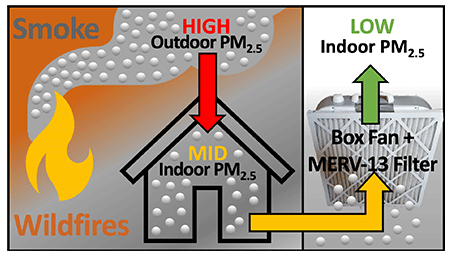Popular Science recently took a look at how wildfires are polluting our air. They cited research about the increase in two pollutants due to wildfires: PM2.5 (fine particulate matter less than 2.5 micrometers in size) and ozone. This research, conducted by Dmitri Kalashnikov, a doctoral student in environmental science at Washington State University Vancouver, found the co-occurrence of these two pollutants has increased significantly in the last 20 years in the western U.S. during July–September, as wildfires have increased.
Dan Jaffe noted that understanding the relationship between PM2.5 and ozone levels isn’t straightforward. He and Jaffe Group researchers have previously found that the most extreme levels of PM2.5 and ozone tend not to occur on the same days. He says that the new paper is still “definitely a step forward.”
Understanding and responding to the increase in wildfires and their unhealthy pollution are important issues for western communities and policy makers.
